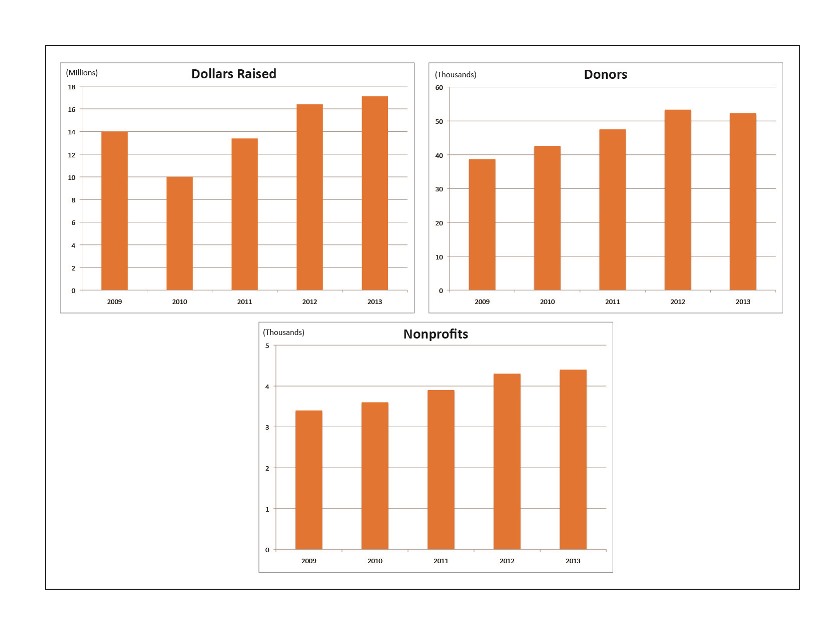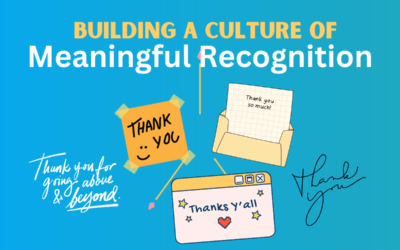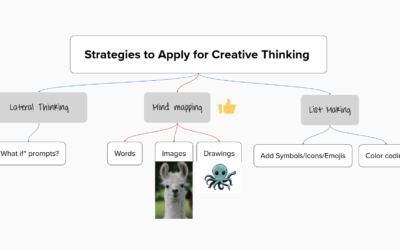It’s no coincidence the concept of collaborative giving days emerged as social sharing tools passed into mainstream adoption. Most people had email before 2009, but not everyone used it as a broad sharing tool. Facebook changed all that, and now Twitter, Google+, and many more have given people more ways to quickly share with large numbers of people. Nonprofits, always eager for a new way to capture some mind-share (not to mention some dollars) leapt into the new media frenzy with the idea that a shared community effort could raise more money than individual efforts alone. Blackbaud’s most recent numbers seem to bear this out – online giving is growing.
Collaborative giving days – such as Give to the Max Day in Minnesota – are seeing growing success as more people become aware of the benefits of online giving. Not to mention the benefits of sharing their giving choices. More nonprofits are participating, and more dollars are being raised (see chart below). Despite a technical problem last year, the Minnesota campaign still raised more money than ever before. The success isn’t evenly distributed, however. Charities which planned for how they use and support their team of outside volunteers are doing better than nonprofits which just send organizational emails and do social campaigns from institutional pages. In social fundraising, people are giving to people, they just use charities to make the gift.
Take the case study from John Haydon about Twin Cities Habitat for Humanity. Habitat nearly quadrupled their revenue using team leaders (they called them Builders) to reach to their social networks for Give to the Max Day gifts. These same tactics can work for any small or medium-sized nonprofit. Where large-scale philanthropy may require specific outcomes against organizational goals, most giving day donors are making smaller gifts – often under $100. A compelling case from the nonprofit is important, but even more important is the social connection between the person asking for donations and the person receiving the request. It’s no longer Habitat for Humanity asking for a gift. It’s a coworker; a friend; a family member. People who say no have to say no to both the great cause and to their social connection.
There is a double-edged sword about giving days, however. Here, the built-in excuse is “I’m already giving to (great cause here).” Nevertheless, a potentially worse fate awaits the nonprofits which choose to miss the social excitement of giving day. That response may be “sorry – I’m tapped out because I gave to everyone else on Give to the Max Day.” Charities wanting a shot at those donations need to be in the game on giving day, and charities wanting to succeed need a plan. Starting now.
Download our white paper on social giving for more detailed information, or contact steve@nextinnonprofits.org.



